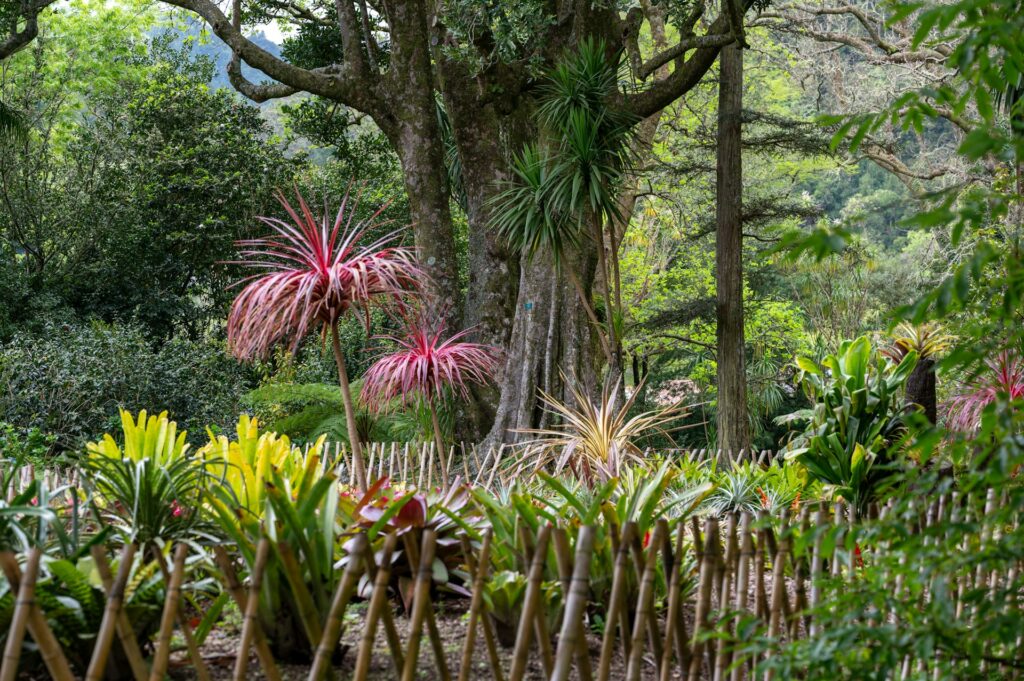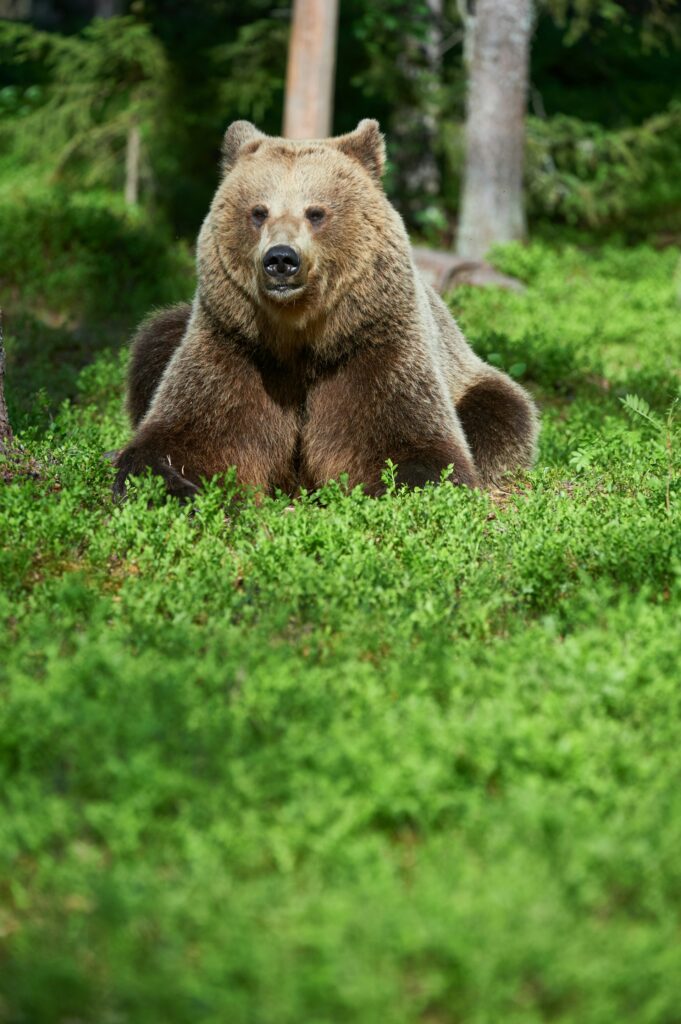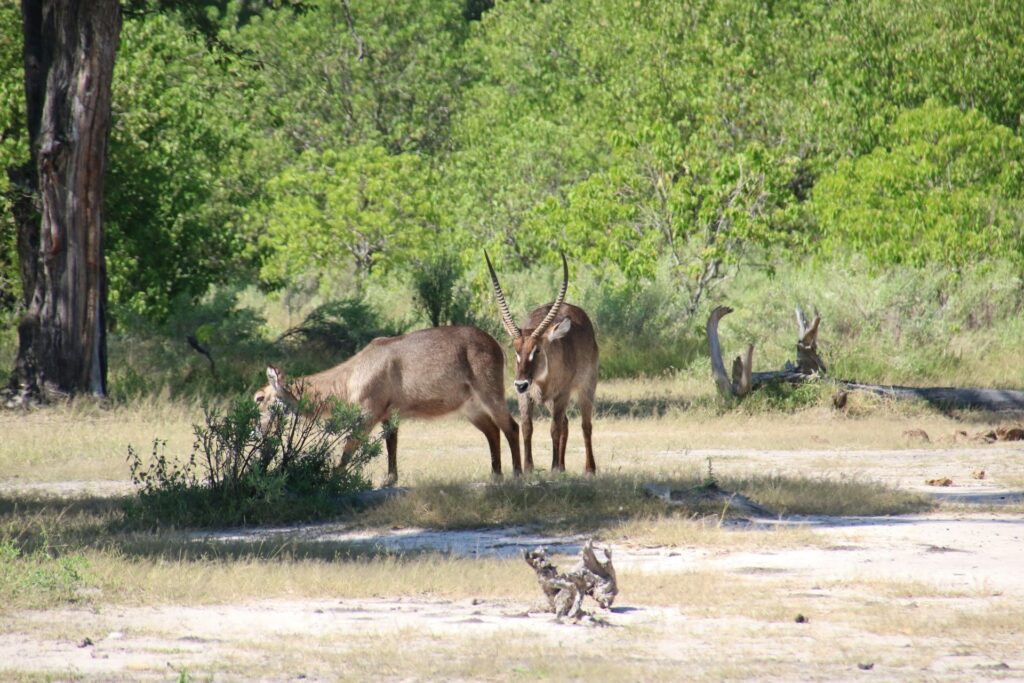As we edge closer to 2024, the eco-tourism landscape is evolving faster than a solar-powered plane taking off, with travellers seeking out destinations that offer both natural beauty and a commitment to sustainability.
And why not? Well, here’s why: because if we don’t start considering our carbon footprint more keenly, then there won’t be a planet to explore for much longer. That’s a bleak thought that we need some escapism from, stat. With that in mind, here are 10 key eco-tourism destinations that are set to take centre stage in 2024.
The Azores, Portugal
Enjoying pride of place in the breeze, balmy heart of the Atlantic Ocean, the Azores archipelago is a haven for eco-tourists. With its lush landscapes, abundant marine life, and commitment to renewable energy, it’s no wonder the Azores has been dubbed the ‘Green Islands’. In 2024, we predict the Azores will be a top destination for those seeking a sustainable island getaway. Don’t miss the chance to explore the volcanic landscapes of Pico Island or the geothermal springs of São Miguel.
Best Time to Visit: The best time to visit the Azores is between June and September when the weather is warmest and the days are longest. This is also the best time for whale watching, a popular activity in the archipelago.
Where to Stay: The Terra Nostra Garden Hotel in São Miguel is one of the area’s most outwardly eco-friendly facing hotels, sitting, as it is, in the heart of a stunning botanical garden. It’s renowned for its thermal pool and commitment to sustainability.

The Burren, Ireland
The Burren, located in County Clare, Ireland, is a unique karst landscape that is home to a rich array of flora and fauna. The Burren EcoTourism Network (B.E.N) has been recognised globally for its commitment to sustainable tourism, making this a must-visit destination for eco-conscious travellers.
One of 2024’s top sustainably minded destinations, next year The Burren’s visitors will be enchanted by its wildflower meadows, ancient archaeological sites, and local food tours.
Best Time to Visit: The Burren is best visited in May when the wildflowers are in full bloom.
Where to Stay: Gregans Castle Hotel, a member of the Burren Ecotourism Network, boasts of a strong focus on sustainability and local sourcing.
Read: 8 of Ireland’s greatest road trips to take in 2024
The Cardamom Mountains, Cambodia
Cambodia’s Cardamom Mountains are one of Southeast Asia’s last remaining wildernesses. With, incredibly, over 95% of its forests still intact, this biodiverse hotspot is home to numerous endangered species and is a key player in the fight against deforestation. In 2024, eco-tourists are likely to head to the Cardamom Mountains for its community-led tours, wildlife spotting opportunities, and conservation projects.
Afterwards, why not enjoy a couple of days in Siem Reap, taking in the incredible, humbling wonder of the world, Angkor Wat, which has recently been named the ‘8th Wonder Of The World’.
Best Time to Visit: The dry season from November to April is the best time to visit the Cardamom Mountains. The weather is cooler and the trails are more accessible.
Where to Stay: Cardamom Tented Camp contributes directly to conservation efforts in the area. It’s an ideal base for exploring the surrounding wilderness.
Torres del Paine National Park, Chile
Torres del Paine National Park in Chile is a UNESCO Biosphere Reserve and a model for sustainable tourism. With its breathtaking glaciers, lakes, and peaks, it’s a paradise for nature lovers. In 2024, we expect Torres del Paine to be a top eco-tourism destination, with travellers drawn to its sustainable lodges, guided treks, and commitment to preserving its unique ecosystem.
Best Time to Visit: The best time to visit Torres del Paine is during the Southern Hemisphere’s summer, from December to March. The weather is warmer and the days are longer, making it ideal for hiking.
Where to Stay: EcoCamp Patagonia offers sustainable geodesic domes that blend into the surrounding landscape. It’s the perfect base for exploring the park and offers a range of guided treks.
Read: 7 of the best things to do in and around Chile’s capital city, Santiago
The Great Bear Rainforest, Canada
The Great Bear Rainforest in British Columbia, Canada, is one of the world’s largest temperate rainforests. This pristine wilderness is home to a rich array of wildlife, including the rare white Spirit Bear. In 2024, this destination looks set to further captivate eco-tourists with its sustainable wildlife tours, indigenous-led cultural experiences, and conservation initiatives.
Best Time to Visit: The best time to visit the Great Bear Rainforest is during the salmon run from late August to early October. This is when wildlife, including bears and eagles, are most active.
Where to Stay: The Great Bear Lodge is all about remote, eco-friendly accommodation with a focus on grizzly bear viewing. The lodge is only accessible by floatplane, adding to its secluded charm.


Kangaroo Island, Australia
Kangaroo Island, off the coast of South Australia, is a sanctuary for wildlife and a pioneer in sustainable tourism. From its pristine beaches to its eucalyptus forests, the island is a haven for native Australian species.
In 2024, we foresee Kangaroo Island attracting eco-tourists with its eco-friendly accommodation, wildlife rehabilitation centres, and local food and wine tours.
Best Time to Visit: Kangaroo Island is a year-round destination, but the best time to visit is during Australia’s summer, from December to February, when the weather is warm and wildlife is abundant.
Where to Stay: The Southern Ocean Lodge possesses stunning views of the rugged coastline. The lodge is committed to sustainability and offers a range of local experiences.
The Sian Ka’an Biosphere Reserve, Mexico
The Sian Ka’an Biosphere Reserve in Mexico is a UNESCO World Heritage site and a model for sustainable tourism. This diverse ecosystem, spanning tropical forests, marshes, and barrier reefs, is home to a myriad of species.
In 2024, Sian Ka’an will continue to draw in eco-tourists with its sustainable tours, birdwatching opportunities, and community-led conservation efforts.
Best Time to Visit: The best time to visit Sian Ka’an is during the dry season, from November to April. This is when the weather is most pleasant and the mosquito population is lower.
Where to Stay: The CESiaK (Centro Ecologico Sian Ka’an) offers eco-friendly accommodation and uses solar and wind power. It’s located within the reserve and offers a range of eco-tours. That said, it is currently closed indefinitely for maintenance. Alternatively, the Mukan Resort Hotel offers the ultimate luxury of seclusion and serenity.
The Okavango Delta, Botswana
The Okavango Delta in Botswana is a UNESCO World Heritage site and one of the world’s largest inland deltas. This unique ecosystem is a sanctuary for a diverse range of wildlife and is at the forefront of sustainable tourism in Africa. In 2024, Okavango Delta looks set to attract eco-tourists with its community-led wildlife safaris, conservation initiatives, and eco-lodges.
Best Time to Visit: The best time to visit the Okavango Delta is during the dry season, from May to October. This is when wildlife viewing is at its best.
Where to Stay: The Xigera Safari Lodge is all about its strong commitment to sustainability. The lodge is powered by solar energy and offers a range of wildlife viewing experiences.

The Faroe Islands, Denmark
The Faroe Islands, an archipelago under the sovereignty of Denmark, is a destination that’s committed to preserving its natural beauty and cultural heritage. With its dramatic landscapes and rich birdlife, it’s a paradise for nature lovers. In 2024, expect to see the Faroe Islands drawing in eco-tourists with its sustainable practices, local food experiences, and opportunities to explore its rugged landscapes.
Best Time to Visit: The best time to visit the Faroe Islands is during the summer, from June to August, when the weather is milder and the days are longer.
Where to Stay: You’re not going to find international juggernaut resorts on the Faroe Islands, and that’s a massive part of the charm here. For something much more laid back, the Gjáargarður Guesthouse in Gjógv brings with it comfortable accommodation with a focus on sustainability. It’s located in a picturesque village and is a great base for exploring the islands.
The Cloud Forests of Monteverde, Costa Rica
Costa Rica is a global leader in eco-tourism, and the cloud forests of Monteverde are a testament to this. This biodiverse hotspot is home to countless species and offers a unique forest experience. In 2024, Monteverde will continue to captivate eco-tourists with its sustainable canopy tours, birdwatching opportunities, and commitment to conservation.
Best Time to Visit: The best time to visit Monteverde is during the dry season, from December to April. This is when the weather is most pleasant and the trails are more accessible.
Where to Stay: The Monteverde Lodge & Gardens offers comfortable, eco-friendly accommodation. It’s located close to the cloud forest reserve and offers guided tours.
The Bottom Line
2024 is set to be a transformative year for eco-tourism. As climate-conscious travellers, we have the power to support these destinations and their sustainability efforts, ensuring that our holidays are not only unforgettable but also responsible.





